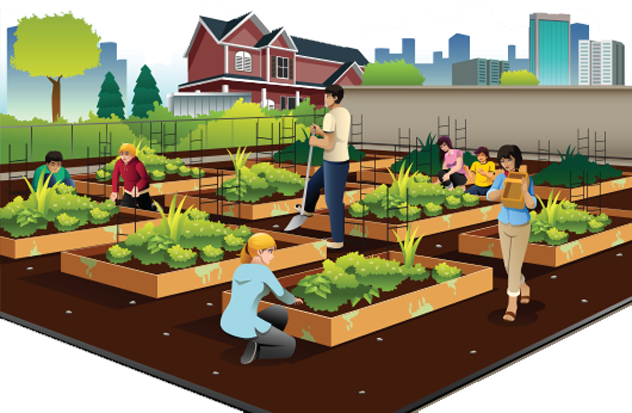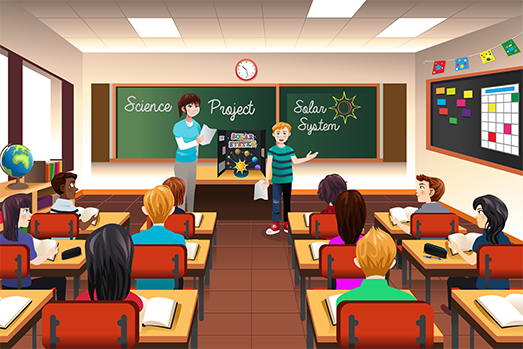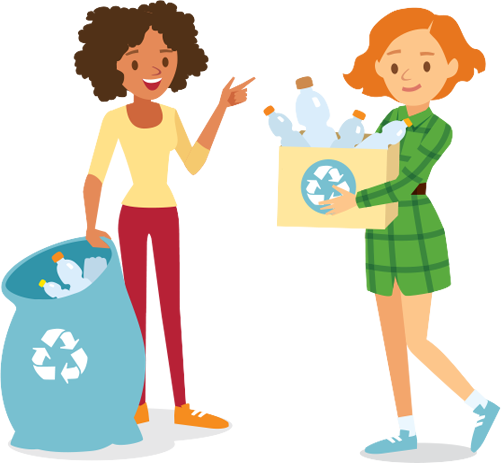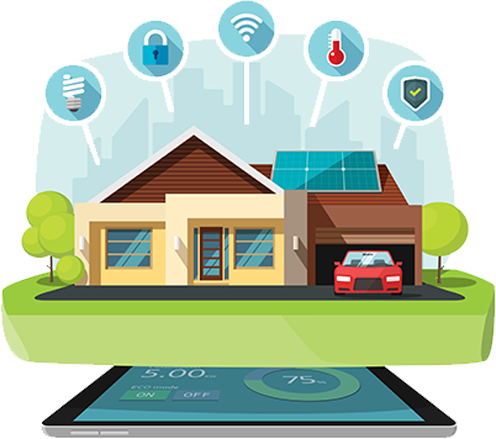All kids, from kindergarten through 12th grade, can make lifestyle changes that lead to a reduction of carbon emissions. Use this guide to learn how everyone, especially students, can take action to address global warming. Some changes can be difficult, while others are both simple and easy. Read more to find out how and why this issue is so critical and how we can all make a difference.
Actions & Impacts: Kids’ Choices Matter for the Planet
According to the Environmental Protection Agency (EPA), by the year 2100 the U.S. average temperature is projected to rise between 3 and 12 degrees Fahrenheit. As a significant portion of the world’s population, kids have the power to make choices that will impact the future of the planet and place us on the lowest emission pathway.
| WHAT’S HAPPENING NOW | CHANGE YOU CAN MAKE | LET’S MAKE THIS OUR GOAL |
|---|---|---|
|
Currently, the U.S. has about 250 million vehicles on the road. By some estimates, the total number of vehicles worldwide could grow from 1.2 billion to 2.5 billion by 2050. |

Walk to school Take mass transit Ask your parents to think about an electric vehicle |
EVs emit less than half the emissions of a gasoline-powered car at only 0.34 pounds of carbon dioxide per mile over its lifetime. If we replaced 1 million cars with EVs by 2050, we’d reduce carbon emissions by more than double. |
|
According to a report from Brighter Planet, the typical American has a carbon “foodprint” of over 12,000 pounds of CO2 each year and as the number of food consumers continues to increase, so will the amount of total CO2 emissions. |

Help your school create an organic garden |
By some estimates, using a garden to replace 20 percent of purchased food can reduce a person’s carbon footprint by about 68 pounds per year. If even half of the 125 million U.S. households did this by 2050, it would prevent the release of 4.25 billion tons of carbon dioxide per year. |
|
The EPA notes that in 2014, U.S. greenhouse gas emissions totaled 6,870 million metric tons of carbon dioxide equivalents, a 1 percent increase over the year prior. If we continued that trend into 2050, we’d increase CO2 emissions by roughly 34 percent. |

Lobby your school to get solar panels or a wind turbine |
The National Center for Education Statistics reports that there are 98,817 public schools in the U.S. If 50 percent of schools had a 100 kW solar array, this would produce 4,940 megawatts of solar electricity – saving 50.2 million tons of CO2. |
|
The Environmental Defense Fund notes that for every 10 minutes your engine is off, you’ll prevent one pound of carbon dioxide emissions. The EDF estimates that in New York City, idling produces 130,000 tons of CO2 each year. |

Encourage parents to quit idling while waiting in the school pick-up line |
If just 30 parents from each of the nearly 100,000 public schools in the U.S. turned off their engine for 10 minutes, parents and guardians would be preventing 3 million pounds of CO2 from going into the atmosphere. |
|
The Center for Global Development reports that by 2050, an area of tropical forests the size of India will be lost if humans continue on their current path of deforestation, releasing more than 100 gigatons of CO2 into the atmosphere. |

Plant a tree at home or get your class to plant a tree at school |
According to American Forests, one mature tree can absorb 48 pounds of CO2 each year. If every child in the U.S. planted at least four trees in their lifetimes, it would mean nearly 300 million trees planted and 14.4 billion tons of CO2 absorbed each year. |
How Will Global Warming Impact Where I Live?

What’s Happening & Why: Causes of Global Warming?
Year to Date Global Temperature
NOAA
Modern scientists have found that the Earth is a lot warmer today compared to about 160 years ago. The reason is that gases like carbon dioxide, methane, and humidity trap heat in the atmosphere. Because of this, these gases are called greenhouse gases (GHGs), and the world would be an icy place without them at an average temperature of negative 59 degrees Fahrenheit. With the presence of GHGs the earth is about 100 degrees warmer at plus 59 degrees Fahrenheit. So GHGs make the earth livable, but if you tip the delicate balance of gases in the atmosphere, the Earth trends warmer.
Use of electricity and heat
Industrial uses of energy
Transportation
Fuel combustion for other purposes in residential and commercial buildings
Other sources related to the production and consumption of energy
Agriculture
Net forest loss
Industrial processes and waste management
According to Gunson, global warming is caused by increased levels of carbon dioxide in the atmosphere. Carbon dioxide is a greenhouse gas that traps heat in the atmosphere. A lot of the increase in CO2 is due to burning gasoline, coal, and natural gas to power our cars and generate electricity that we use at home, at school or at work. Deforestation is worsening the climate crisis. Fewer trees mean less carbon dioxide “sequestration” or storage.
Fossil fuels were formed from prehistoric plants and animals that were alive hundreds of million years ago. When these living organisms died, they decomposed and were buried under rock, mud, and sand. The different types of fossil fuels used today depend on the type of animal and plant debris composition, how long the material was buried, and temperature and pressure conditions.
Coal: Created from the organic materials found in land and swamp plants.
Oil: Aquatic organisms that lived in the water and were buried under the ocean or river sediments formed oil.
Natural gas: Found in areas where higher pressure and temperature levels continued working on oil until natural gas was formed.
Hundreds, sometimes even thousands of feet cover these decomposed materials, now known as fossil fuels. Depending on the fossil fuel, there are a few different ways to extract them. Coal is mined by two methods, either opencast (surface) or deep (underground) depending on where the coal deposit sits. Oil and natural gas are extracted by drilling wells into underground reservoirs.
Snow, Sand or SCUBA: Global Warming’s Impact on Your Favorite Vacation Destinations
While it’s hard to see global warming when you live in one place year-round, it’s easier to see the impact when you go somewhere once or twice a year. Vacations are a time to get away and have fun, but as the Earth’s temperature rises, more and more kids will start to see that their usual spots for recreation are changing significantly.
Areas of the world that depend on snowpack for water or where winter is key to the economy, are struggling as trends show less water falling as snow and more precipitation falling as rain.
Glaciers and polar ice sheets are melting, adding more water into the ocean. Ocean temperatures are also rising, making water expand more. Combined, these two effects of global warming are increasing sea levels and endangering shorelines and coastal communities.
In some drier regions of the world like Southern Africa, southern Asia, the Mediterranean and the U.S. Southwest, precipitation has declined over the past 40 years. These areas are seeing increased drought and below-normal levels of rivers, lakes, and groundwater.
Coral reefs provide a home to more species than
any other marine environment and are
as biodiverse as rainforests. Global
warming, pollution and unsustainable
fishing practices are destroying and severely
damaging many of the world’s coral reefs.
Global warming has led to heavy rain and warmer temperatures, a situation that mosquitos thrive in. Other diseases that are transmitted by mosquitos
like dengue fever and the West Nile virus are
also impacted by global warming.
In 2008, Venice was under five-feet of water as it suffered its worst flooding in 22 years. As the sea level continues to rise, Venice and sites like it are endangered by the constant threat of flooding.
Warm weather can be pleasant, but 115-degree Fahrenheit weather, like Las Vegas saw in 2016, can be dangerous. 2016 was the hottest year on record, according to NASA and the National Oceanic and Atmospheric Administration.
Kid Spotlight: 8 Inspirational Eco-Warriors
If you’re ready to spark some change, check out these President’s Environmental Youth Award winners and others for inspiration:
CYC Sunshine Youth Garden
Illinois
Eighteen dedicated students in first through fourth grade planned and cared for the CYC Sunshine Youth Garden. The garden is an outdoor classroom where kids, families, friends, and neighbors can learn and have fun together. The Garden includes a community mural, sculptures, a memory garden and vegetable, and herb gardens. In 2015, this Nature Team with help from the community created sections of the garden, including a strawberry patch, a sunflower challenge, and a composting area. Team members donated fresh tomatoes, greens, carrots, peppers, and sunflowers to neighbors who visited the garden.

Solar Panels: Short and Long Rays of Effect
Colorado
Four 8th graders at Mackintosh Academy researched, wrote, and successfully earned a grant to make clean, renewable energy part of their school. Along with procuring the equipment to generate solar energy, these students led two campaigns to also educate their peers on the benefits of solar power. Thanks to their hard work and dedication, their school is saving thousands of dollars on its electricity bill. With these savings, the students have developed a “Solar Scholar” scholarship fund. They have also successfully prevented nearly 20,000 pounds of carbon dioxide from being generated.

Water Conservation at Meadows Elementary with Earth Library
California
When fifth-grader Joshua heard about the California drought, he began taking action. After getting approval from the school principal, he created and shared informative flyers, changed the way art brushes were cleaned to save water and began an Earth Library for students wanting to learn more about environmental protection. He also created posters with water conservation tips, created “Meadows Water Hero” stickers for students using reusable water bottles, and set up a booth at Science Night encouraging water conservation and asking students to sign a pledge to save water and the Earth.

Greening a High School Campus
Nevada
Celeste lives in an area stricken with drought. While studying at a high school that had outdated toilets and leaky faucets, she rallied her friends and peers to raise $12,000 in grant funding to renovate her high school’s bathrooms. Through the grant the school received low flush toilets, auto-sensor lights, and automatic hand dryers and faucets. Encouraged by the success, Celeste sought and received another $3,500 grant to cover the cost of installing a “hydration station” where students could refill their water bottles. To get the money to remove the asbestos before installing the new station, Tinajero and her schoolmates sold reusable water bottles at the school’s annual “Reedstock” festival.

RAGBRAI Recycling Program Assistance
Iowa
Laurel began a recycling program along the route of the 7-day Annual Great Bicycle Ride Across Iowa (RAGBRAI) event. Even with 8,500 riders producing an estimated 1.5 gallons of trash during a typical overnight stopover, people along the route had minimal guidance on trash disposal and recycling. With support from RAGBRAI, Laurel encouraged towns along the route to provide recycling opportunities for riders. She researched recycling programs across the state; designed and gave PowerPoint presentations to host communities; developed resources and tip sheets; and helped event planners with key recycling messages, signage, and placement. Laurel is now known as the “RAGBRAI recycling girl.”

Impact of Energy Consumption Reduction on Household Carbon Footprints
Pennsylvania
Rohan investigated the impact of easy, energy-saving methods on a household’s carbon footprint by conducting a 10-week experiment. For five weeks, he recorded the energy usage of the household with no conservation actions taken. During the next five, he lowered the thermostat by 1.8 degrees Fahrenheit, unplugged appliances at night, reduced light use, and shortened shower times to 10 minutes per shower. The household experienced a whopping 23 percent reduction in total carbon dioxide emissions. Rohan found that if 50 percent of households implemented his same methods, the US could see a 200 million metric ton reduction in total CO2 emissions.

e-Treasure, Inc.
Florida
Kady came up with a creative solution after hearing that electronic waste is the fastest-growing segment of items in landfills. She began a project known as e-Treasure, which aims to keep the environment free of electronic waste, uses resources wisely, and protects the Earth. Through e-Treasure she began electronics collection drives to ensure their proper disposal. If possible, electronics like cell phones, tablets, and computers are refurbished and redistributed to students, schools, soldiers, or other community members who do not typically have access to these technologies.

Formation of Casis Forest Club
Texas
Drew’s school is next to the three-acre Casis Forest. After learning about threats to the forest’s long-term health he founded the Casis Forest Club, enlisting his peers to restore and protect the land. The club has monthly meetings to learn about the forest’s health and to pick up trash. The students also mulch trails, build erosion control features, and plant native species. Five years later the Club is still operating. Through the Club’s efforts the number of desirable plants and animal species has increased and the downstream water quality has improved.

10 Tips to Boost Your Green Potential
-
Eat less meat
Meat requires a lot of energy and water to produce. According to the Brighter Planet report, a fourth of the average American’s “foodprint” comes from red meat and more than a third of the greenhouse gas emissions generated by the U.S. agricultural system come from the livestock industry.
-
Go solar
Solar energy produces zero emissions. Gunson himself uses solar energy to help power his home. The International Energy Agency (IEA) projects that by 2050, solar power could potentially produce 22 percent of the world’s electricity. In doing so, a significant amount of CO2 emissions from burning fossil fuels would be eliminated.
-
Carpool
On average, people in the U.S. burn 58 gallons of gasoline per month producing 6.2 metric tons of CO2 each year. That’s a lot carbon dioxide that can be saved by just carpooling with a friend or neighbor, possibly cutting that transportation emissions number in half, or even more.
-
Plant a tree
According to American Forests, a tree can sequester one ton of carbon dioxide by the time it is 40 years old. Gunson warns however that with the climate and weather patterns changing it is becoming increasingly difficult for forests to grow.
-
Change a light bulb
Since compact fluorescent light bulbs (CFL) use 60 percent less energy than a regular bulb, by simply replacing a regular incandescent light bulb with a CFL, one small change can save approximately 300 pounds of carbon dioxide annually.
-
Adjust the thermostat
Nearly 50 percent of the energy used in homes goes toward heating and cooling systems. By moving the thermostat down 2 degrees in winter and up 2 degrees in the summer, people could save around 2,000 pounds of carbon dioxide each year.
-
Choose energy efficient appliances
Energy Star appliances use innovative technology to save electricity. For example, dryers moisture sensors detect when clothes are dry and automatically shut the dryer off. These dryers use 20 percent less energy than traditional models and don’t sacrifice features or performance.
-
Drive a fuel-efficient vehicle
In the U.S., transportation makes up 26 percent of greenhouse gas emissions, according to the EPA. Fuel-efficient cars, especially hybrid and electric-only battery-powered vehicles, save fuel, release fewer carbon emissions, and help save money.
-
Spread the word
Gunson notes that while each person can make a difference on their own, the biggest change happens when people work in unison. Like the eco-warriors described above, one person can engage hundreds of people in protecting the planet.
-
Reduce, reuse, recyle
Methane is a potent greenhouse gas that traps heat more effectively than CO2. Landfills, where waste is burned, are the third-largest man-made source of methane gas in the U.S. Reduce, reuse, and recycle items whenever possible to prevent them from becoming yet another source of GHGs.
Eco-Summits, Scholarships & Opportunities: How to Get Involved

Every year the Brower Youth Award, under the umbrella of the New Leaders Initiative, celebrates the work of six young leaders who are making advances in the environmental movement. Students build the skills, resources, and relationships to lead effective campaigns and projects.

Nearly 1,000 students from around the world come together at the UN Economic and Social Council (ECOSOC) Youth Forum to study and discuss youth’s role in implementing, communicating and realizing the 2030 Agenda for Sustainable Development.

K-12 youth who have led outstanding environmental projects are recognized through the President’s Environmental Youth Award (PEYA). The program promotes awareness of our nation’s natural resources and inspires positive community engagement.

Inspired by Dr. Jane Goodall’s efforts to make the world a better place, this community action program is made up of thousands of kids from across the globe. Roots and Shoots empowers youth to find practical solutions to the world’s most serious problems.

Start your own eco club with Kids for A Clean Environment. This group provides information on environmental issues to children, encourages effective ecofriendly activities, and recognizes successful environmental efforts.



